During the past few weeks, Ajax and I have been exploring the trails leading to Rainbow and Island Lake, Pratt Lake Basin, and Dirty Harry’s Peak. On our hikes, I’ve reviewed countless acronyms for my upcoming coaching exam. One that was tricky to learn was DARN CAT, an acronym taken from Miller and Rollnick’s classic book, Motivational Interviewing. As you read this post, see if you can identify change talk within yourself.

What is Change Talk?
How do we know when we truly want to change? In the coaching parlance of Motivational Interviewing, the acronym DARN CAT stands for Desire, Ability, Reason, Need, Commitment, Actuation, and Taking Steps. The first four indicate preparation for change, while the last three represent mobilization or getting started.
Without hearing change talk in a conversation, you might guess that someone is not yet ready, willing, or able to make changes. In other words, they may still be using “sustain talk.” And the most brilliant coaching, convincing, arguing, or strategizing will fail until they are ready. Let’s identify the change talk buzzwords.
Desire for Change
Someone seeking change has a desire for something different. This might be a longing for more free time to do something they love, more autonomy at their job, or a body free from pain. It could also be wanting to write a book, learn something new, or leave a painful relationship.
Change talk buzzwords that match such a desire are want, wish, love, or like. Whenever I go hiking, my primary needs are to move, connect with nature, and explore the beauty around me. Back in January, I decided to try to add richness to my hiking practice. As much as I love hiking with my Labraheeler, Ajax, I wanted to include humans on some of my outings.
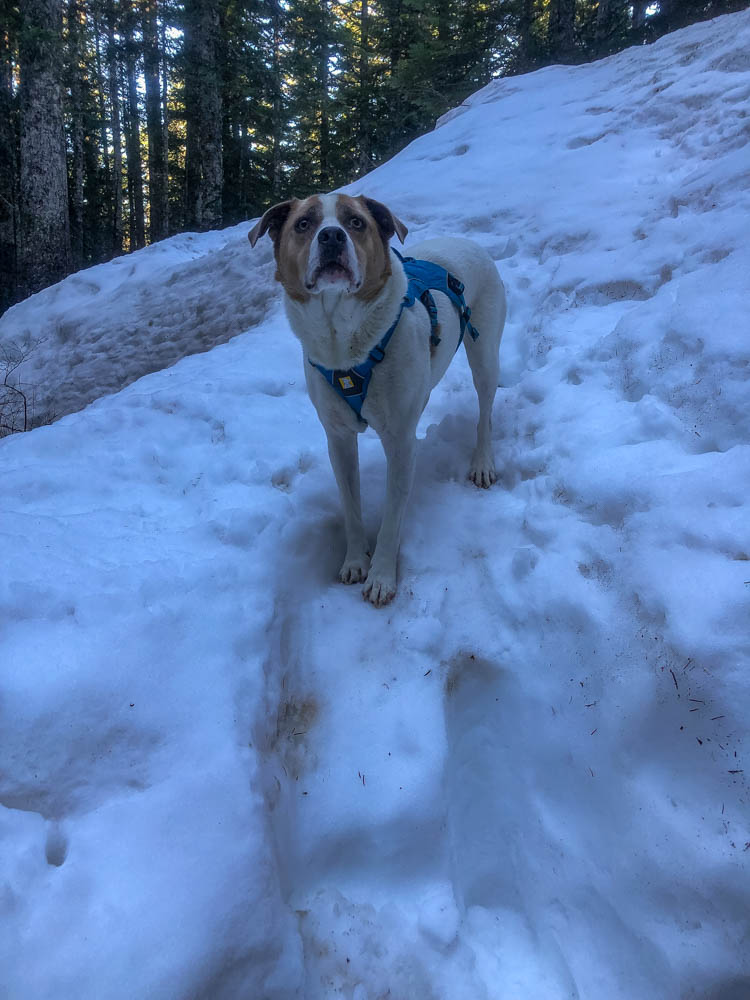
JOURNAL PROMPT: Reflect on the different roles you play in your life: parent, sibling, worker, teammate, child, grandchild, outdoor enthusiast. Pick one to focus on for the sake of the following prompts. What is one thing you want to change related to that role? Why?
Change Talk: Ability
Another preparation phase of change talk is feeling like you are capable of doing something different. In my example of looking for a hiking partner, I could have met new people by going on several Mountaineers hikes. Or leading a few Meet-up outings. Looking for others seeking partners on social media was another possibility.
Change talk keywords indicating ability include can, could, might, or perhaps. Sure, I could do any of those things listed above. However, I know Mountaineers groups often have 12 participants. As an introvert, I do better in a pair or a small group. I also like to include my dog, and I wasn’t excited about hiking with strangers whose abilities I didn’t know. I chose to use my writing superpower to invite a few people to join me on Tuesdays.

Just as we harness our abilities to overcome obstacles on the trail, we can tap into our strengths and superpowers to navigate change as we face life’s challenges.
JOURNAL PROMPT: Using the change you’re interested in making from “Desire”, list a few steps you could take that might help you head in the desired direction. Don’t edit yet, just create a list.
Reason for Change
If you pay close attention to your thoughts, you might recognize phrases like “I would feel X if I did Y” or “Doing A would give me more energy for B.” Sustain talk might use “Yes, but…” in favor of continuing as is.
I continue to love hiking solo. But my reasons for adding other hikers include: having great philosophical conversations, feeling safer while exploring new trails, and growing my hiking community for the time when my 9-year-old dog may not be able to join me. I also enjoy teaching others what I know about hiking and enjoying the wilderness. Asking yourself WHY is a big part of your journey through any sort of change.
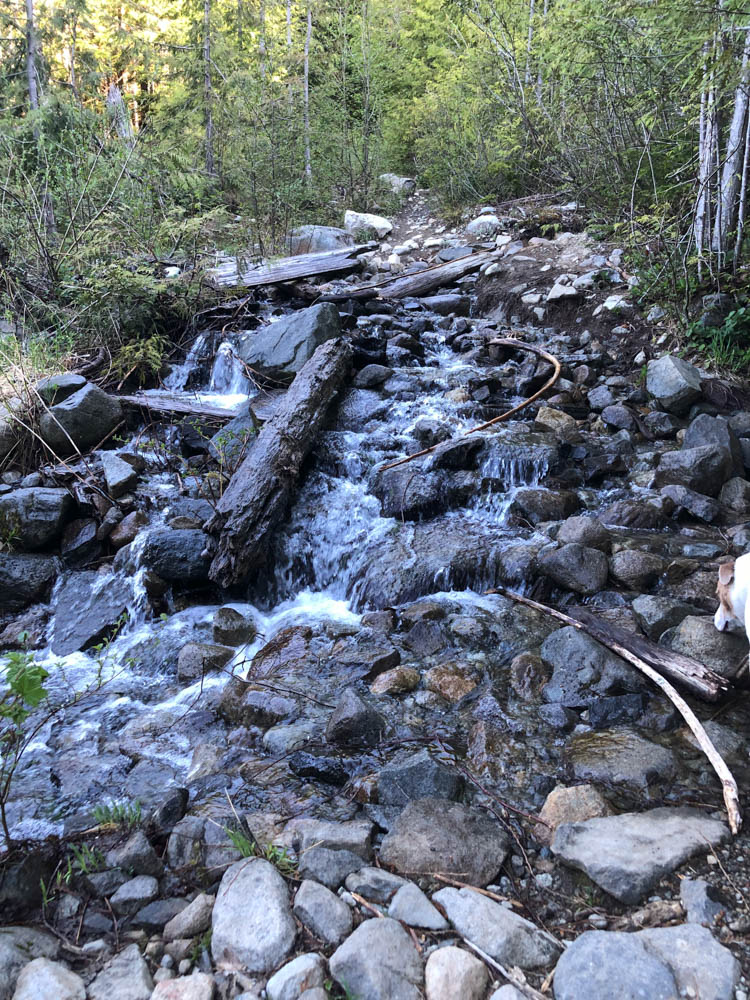
Why Pratt Lake and Dirty Harry’s Peak?
So why attempt Pratt Lake Basin in the early season? My exploration on May 9 was my pre-Mother’s Day gift to myself. I love visiting alpine lakes, especially those accessible from Exit 47. And I wanted to see whether the snow we discovered on our March 28 trip had melted enough to allow access. The snow on the way to Rainbow and Island Lakes was deep and miserably posthole-prone, so I decided to turn us around to explore Pratt Lake.
My reasons for visiting Dirty Harry’s Peak and Balcony on May 14 are different. My daughter turned twenty last week, so this was a celebration of motherhood. The peak hike is steep, one that few people I know would enjoy, which is part of the allure. Hiking it later in the season would be harder on Ajax. I also knew we’d have some great spring birdsong: 27 species including flycatchers, thrushes, and warblers.

JOURNAL PROMPT: Understanding our reasons for change provides us with motivation and direction. Using your possible change, use Precision Nutrition’s sample Five Whys exercise to get at the real reason you want to make a change.
Change Talk: Need
The final preparation stage of change is to identify why you feel obligated to change. Change talk buzzwords include ought to, have to, and the ever-popular and soul-sucking should. Whether these beliefs come from outside of ourselves or inside is a topic for another blog post. But suffice it to say, if we want change, feel we can change, and have reasons and a need for change, then we are much more likely to start into the motivation stages of change.
JOURNAL PROMPT: With your change in mind, think about how your life might be different if you make this change. Then think about your life in a year, five years, ten years if you don’t make this change. This exercise can help you identify a strong need by using your creativity and imagination to picture two futures. Which one is more compelling?

Commitment
Following the preparation phase of change one moves into action. Change talk in the commitment phase might use the buzzwords promise, intention, or phrases such as “I am going to.” In this phase, it’s important to focus the change talk on what you want rather than what you don’t want or want to avoid.
Using my example of finding more hiking partners, my commitment to myself and the universe was to show up on Tuesday mornings, rain or shine, and hike with whoever joined me. And while that commitment changes with weather — especially high winds — it has gotten me to do 25 hikes and rambles so far this year.
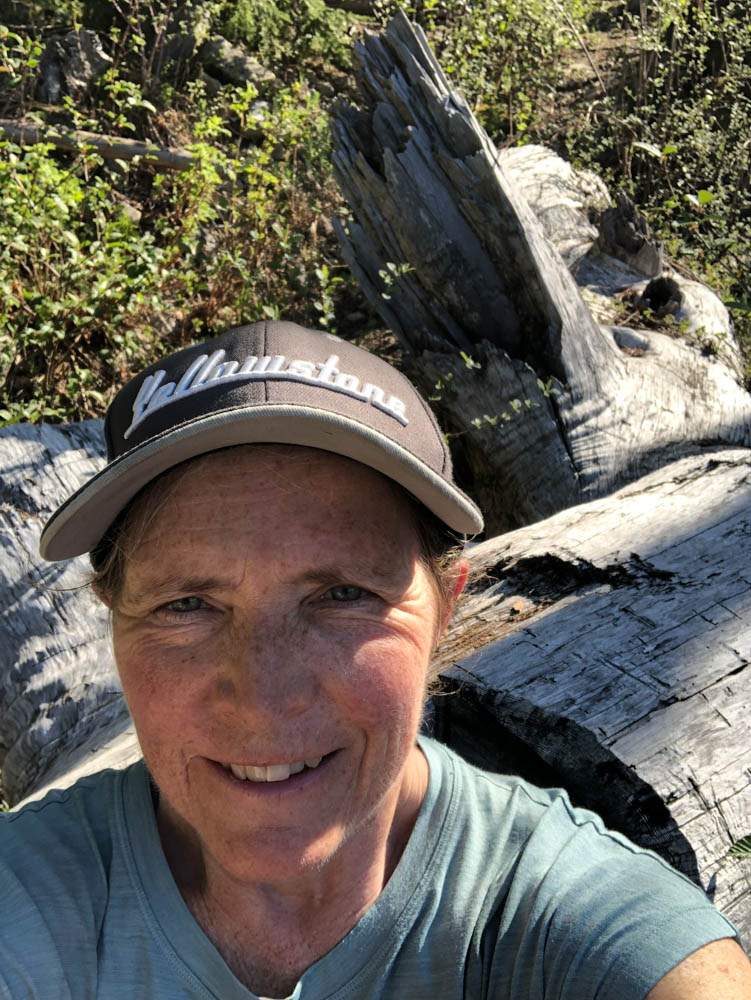
Once I realized I wanted to include solo hiking and hiking with partners, I changed it to hiking with a partner 1-2 times a month. Realize that your commitment doesn’t mean you’ll do something forever. It’s malleable as you learn more about yourself and grow. If you consider it as binding as a wedding vow or contract, it may feel too intimidating to even start. Instead, think of it as an experiment.
JOURNAL PROMPT: Just as we commit to our exercise or nutrition goals, we need to commit to our personal growth and change. What experiment are you ready to try related to the change you want to make? If it helps, try setting SMART goals that are specific, measurable, action-oriented, realistic, and time-stamped.
Actuation
Actuation is a fancy word for “move to action” or “activation.” It speaks to your willingness to change. Change talk keywords include “I am ready for…” or “I will start on X day.” In my hiking example, I committed to showing up on Tuesday mornings and hiking with whoever showed up. Then all I needed to do was to pack my things, get my dog in the car, and drive to the designated trailhead.
One tip I find in this stage is to be flexible and ready for anything. When we started our hike toward Island and Rainbow Lake, I didn’t know what the snowpack would look like. I had backup plans to visit Pratt Lake or even return to Olallie Lake if the snow presented too much of an obstacle. The most important thing is to take action. We cannot expect any sort of change without action.

JOURNAL PROMPT: Consider your first few steps toward change. Any journey begins with a single step. Taking that first step towards change is the hardest thing to do because you’re breaking out of a rut and heading into the unknown. And that’s scary. It’s also the beginning of something transformative. Pick one action, just one, and add it to your calendar. It can be as simple as making a phone call or texting your coach to set up an appointment.
Taking Steps
Finally, “taking steps” refers to whatever you do to take action. Change talk buzzwords include “I went out and did…” or “Yesterday I chose…” My steps include committing to my blog readers that I will hike McClellan Butte and share my journey in a future blog post.
Here’s what DARN CAT looks like in action:
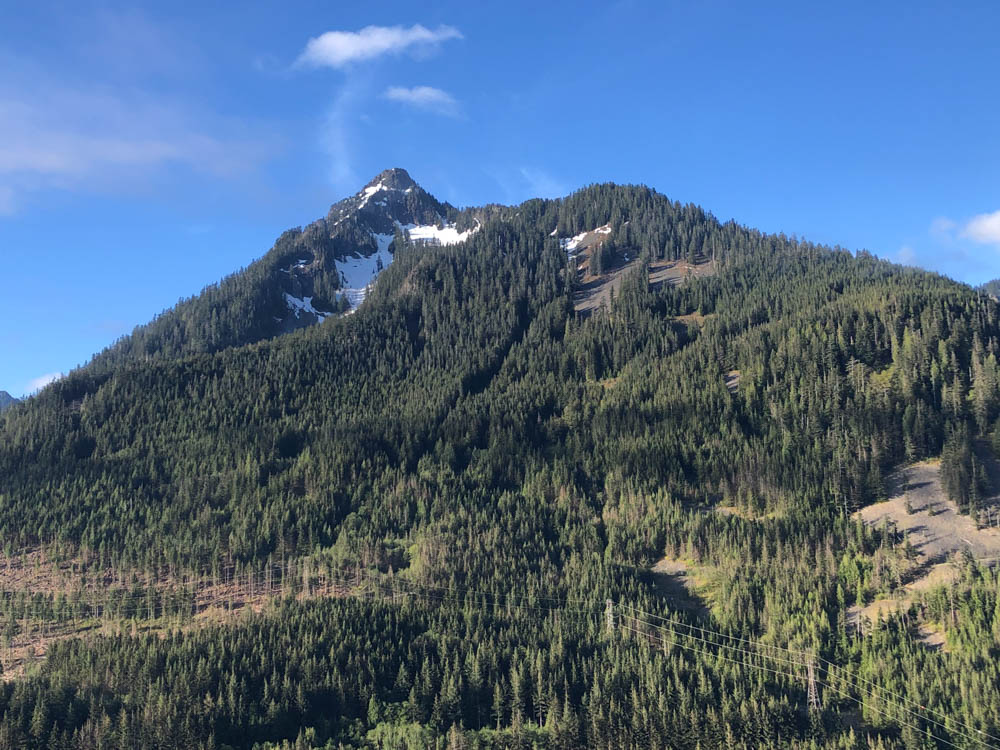
I’ve identified a desire (to hike McClellan Butte). I know I am capable of hiking it; I did so 35 years ago and I do comparable hikes several times a month. My reasons include adding to my hiking repertoire, getting a new view of the I-90 corridor, and overcoming a fear (false evidence appearing real) that it’s not safe.
As for need, I seek adventure and novelty along with growing my self-efficacy. If I can overcome fears within my superpower arena, I can use that growing muscle in areas that vex me, such as marketing and technology.
Assuming the weather cooperates, I will hike it on Tuesday, May 28, and share it in my first June post. I have added it to my calendar and announced it publicly. Excitement is building, telling me it’s time. I’m ready. The rest is up to fate.
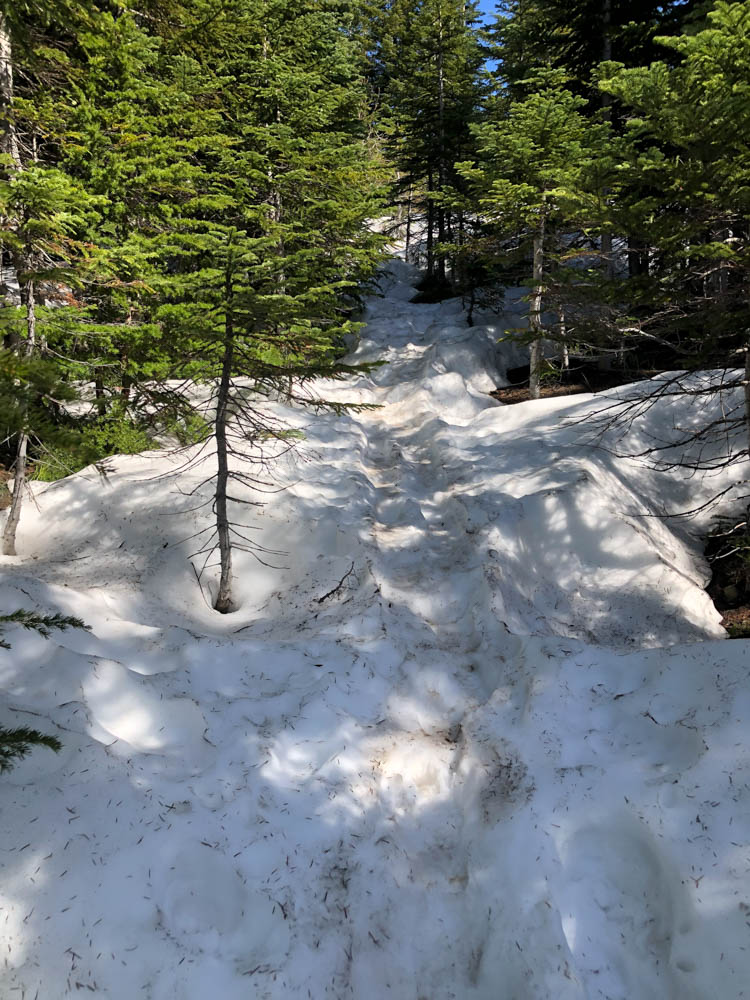
JOURNAL PROMPT: Each small step we take on our journey brings us closer to the change we seek. Find one person to share your action with. It could be an accountability partner, your coach, a work colleague, a close friend or family member, or a blog reader. By speaking your intention out loud, you build momentum toward change.
Takeaways
My recent long adventures to Pratt Lake Basin and Dirty Harry’s Peak have prepared me physically for McClellan’s Butte. My review of change talk and DARN CAT have given me the fuel to see that I am ready to make this change, all I needed was to own it and commit to it.
You can embark on a unique journey of change, using the principles of MI’s change talk. What change are you facing? Share on the blog so we can all learn and grow.
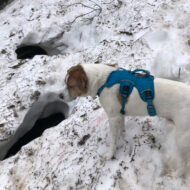
Look forward to reading your report of McClellan Butte…thanks for this great article.
You’re most welcome. Keeping fingers crossed that Tuesday brings better weather than today (deluge!) Eager to explore a trail I haven’t been on in a very long time!
Great article Courtenay. Thanks for sharing!
Thanks so much for your comment, Sarah! Glad you found it interesting. Keep hiking!